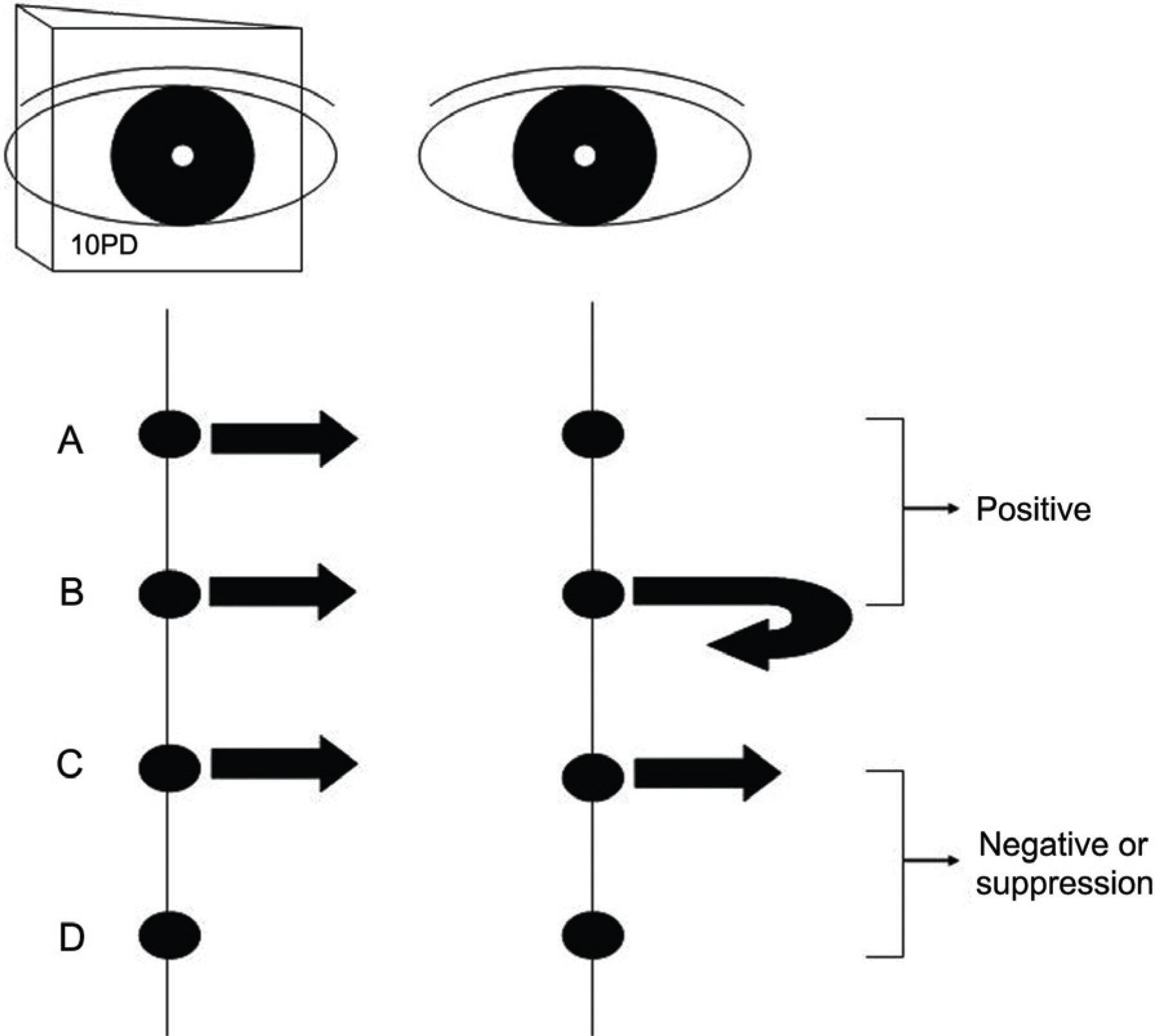J Korean Ophthalmol Soc.
2009 Feb;50(2):269-274. 10.3341/jkos.2009.50.2.269.
10-Prism-Diopter Fixation Test for Amblyopia
- Affiliations
-
- 1Department of Ophthalmology, Soonchunhyang University College of Medicine, Seoul, Korea. scheye@hosp.sch.ac.kr
- KMID: 2212061
- DOI: http://doi.org/10.3341/jkos.2009.50.2.269
Abstract
-
PURPOSE: To evaluate the clinical usefulness of the 10-prism-diopter (PD) fixation test in the diagnosis of amblyopia.
METHODS
The study comprised 132 children (42 normal, 90 amblyopes) who underwent the 10-PD fixation test and stereoacuity test. The sensitivity, specificity, false-positive and false-negative rates of the 10-PD fixation test were analyzed according to the clinical diagnosis.
RESULTS
The 10-PD fixation test sensitivity was 86%, the specificity was 61%, the false-positive rate was 17% and the false-negative rate was 24%. Data showed agreement between the 10-PD fixation test and the stereoacuity test (gamma=0.737, p=0.000). The results in the 10-PD base-down test and base-out test also showed agreement (gamma=0.779, p=0.000).
CONCLUSIONS
The 10-PD fixation test is a simple and useful method in detecting amblyopia.
Keyword
Figure
Reference
-
References
1. von Noorden GK. Amblyopia: a multidisciplinary approach. Invest Ophthalmol Vis Sci. 1985; 26:1704–16.2. Zipf RF. Binocular fixation pattern. Arch Ophthalmol. 1976; 94:401–5.
Article3. Zipf RF. Binocular fixation pattern. Arch Ophthalmol. 1976; 94:1632.
Article4. Knapp P, Moore S. Diagnostic procedures in an orthoptic evaluation. Am Orthopt J. 1962; 12:63–9.
Article5. Wirght KW, Edelman P, Walonker F, Yiu S. Reliability of fixation preference testing in diagnosing amblyopia. Arch Ophthalmol. 1986; 104:549–53.6. Lee SJ, Park SH, Shin HH. Stereopsis in child amblyopes. J Korean Ophthalmol Soc. 1995; 36:1598–604.7. Emin CS, Mehmet CM, Sansal G, et al. The reliability of grading the fixation preference test for the assessment of interocular visual acuity differences in patients with strabismus. J AAPOS. 2005; 9:468–74.8. Wirght KW, Frances W, Paula E. 10-Diopter fixation test for amblyopia. Arch Ophthalmol. 1981; 99:1242–6.9. Parks MM. The monofixation syndrome. Trans Am Ophthalmol Soc. 1969; 67:609–57.10. Lee SY, Isenberg SJ. The relationship between stereopsis and visual acuity after occlusion therapy for amblyopia. Ophthalmology. 2003; 110:2088–92.
Article11. Simons K, Reinecke R. A reconsideration of amblyopia screening and stereopsis. Am J Ophthalmol. 1974; 78:707–13.
Article


